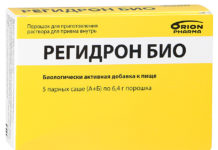Small round, bead-like berries of a coal color are familiar to everyone since childhood - this is black currant, whose beneficial properties and contraindications determine its composition. Active substances are contained in the fruits and in the leaves of the plant, and the first mention of it is found in ancient healers. This is not only a fragrant treat, but also a great cure for many ailments.
Material Content:
Composition and calorie content
Currants are distributed practically throughout Eurasia. This small shrub has been cultivated several centuries ago, and a lot of breeding varieties have come to replace the sour game today, differing in the size of the bush itself, and in taste, and in the chemical composition of the fruits.
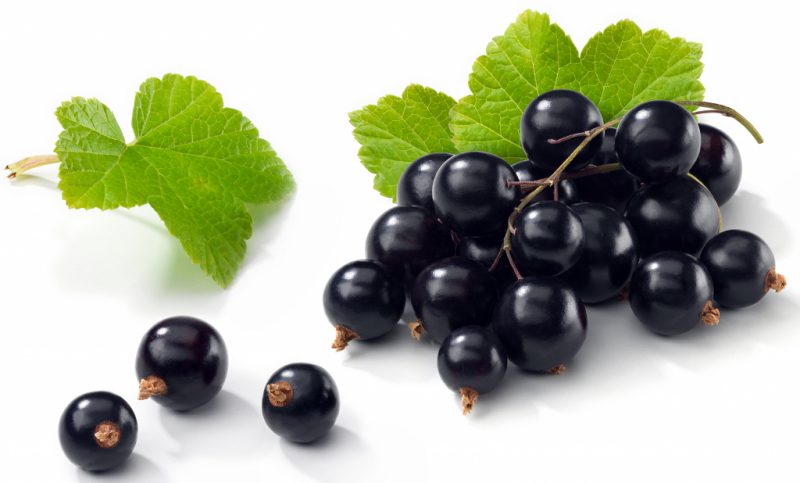
It is noteworthy that currant is a plant that is sensitive to heat. It was this bush that was one of the first to come to life after winter dormancy and even before the snow melts, buds swell on its branches.
Calling currants simply a delicious berry is the same as saying almost nothing about it. Modest berry beads bring benefits almost more expensive pharmacy vitamins. Her secret is in the unique composition of the fruits.
Currant contains:
- vitamins - C, A, PP, B;
- organic acids - citric and malic;
- sugar (glucose and fructose);
- flavonoids;
- pectins;
- tannins;
- minerals - magnesium, phosphorus, iron, potassium, calcium.
It is interesting! The established stereotype that lemon (and other citruses) is a champion in the content of ascorbic acid (vitamin C) is erroneous.
Currant is one of the three leading food products by the concentration of natural vitamin C in them, after wild rose and red bell pepper.
Currant leaves can also boast of a rich composition: they also have a lot of ascorbic acid, carotene, phytoncides and essential oils. Therefore, both berries and leaves of the bush go to the blank.
Read also: currant leaves - medicinal properties and contraindications
For all its usefulness, currants are also low-calorie - only about 45 kilocalories per 100 grams. This makes the berry a popular component of diet food. In addition to consumption as an independent product, currants are included in the composition of smoothies, yogurts, curds and fruit salads for weight loss.
Blackcurrant: useful and healing properties
A small handful of fresh currant berries provides the daily requirement of an adult's body for vitamin C.
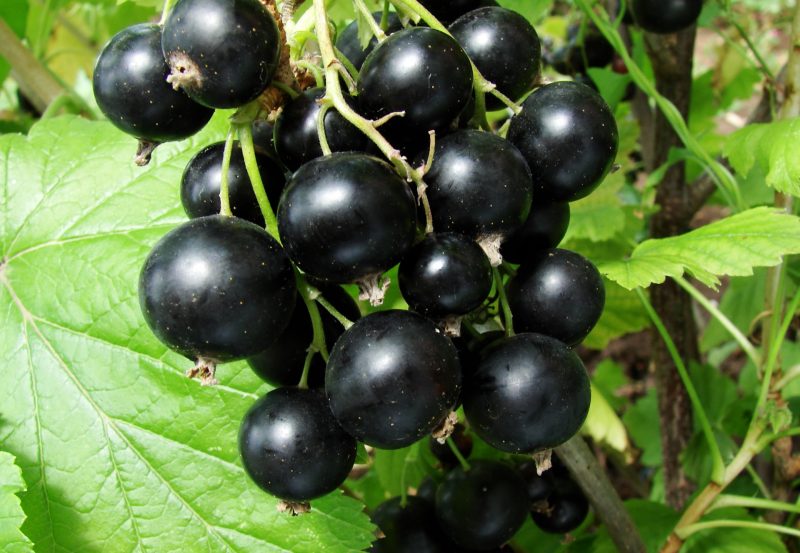
This Vitamin:
- plays a huge role in the functioning of almost all body systems;
- provides proper support to the immune system;
- promotes the withdrawal of toxic substances;
- slows down the aging process ...
... and even kill cancer cells!
With regular consumption of currants, an increase in the tone of the body and its resistance to various infections is noted.
In addition, the fruits of currant:
- have diaphoretic, diuretic, anti-inflammatory effects;
- increase appetite and improve digestion;
- contribute to the activation of metabolic processes.
Berries have a positive effect on the body in the fight against atherosclerosis, help in removing excess fluid and getting rid of edema, and are indicated for gastrointestinal diseases and intense mental work.
The sufficiently high content of pectin and fiber in currant berries makes the product an excellent remedy for constipation. The most popular blackcurrant (along with raspberries) as a remedy for colds and flu. At the same time, the berries contain a minimum of potential allergens, and therefore they are well tolerated by both children and women during pregnancy, as well as by people prone to allergies.
The benefits of leaves, berries of currant
Due to the high content of ascorbic acid and other active components, blackcurrant leaf is widely used as a medicine. Use both greens from the bush throughout the growing season, and dried raw materials. Currant leaf is used both as an independent drug and as part of herbal preparations. Well, it "adjoins", mutually enhancing the action of other components, with raspberry and lingonberry leaves, as well as with rose hips.
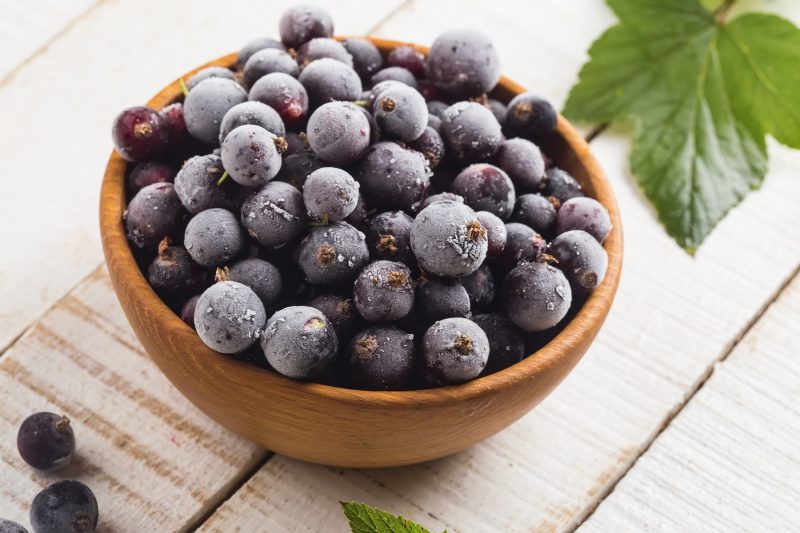
The currant leaf itself has a pleasant aroma that persists after drying. Due to this smell and antibiotic properties, it has found application in the preservation of vegetables and in cooking.
Currant berries are a storehouse of vitamins.
The content of nutrients may vary depending on the variety, growing conditions and even weather.
For example, in hot sunny weather, the berries will be sweeter, but the amount of vitamin C will decrease in them, and in case of cloudy and humid fruits they will start to acidify, but there will be more vitamin C in them.
Berries are widely used to strengthen immunity and fight ARI. Due to the high concentration in the fruits of folic acid, which is important for the formation of the child’s nervous system, they are useful during pregnancy.
Application for various diseases
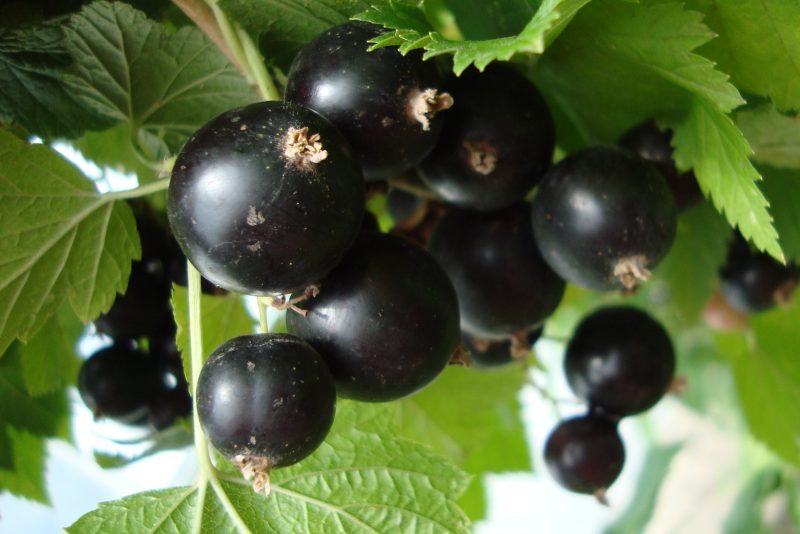
Both in fresh form and in the composition of decoctions and multivitamin preparations, blackcurrant fruits are used for:
- hypo- and vitamin deficiency;
- atherosclerosis;
- a cold
- dysentery;
- scurvy;
- cystitis;
- swelling.
Fresh and dried berries are recommended for use in diseases of the gastrointestinal tract, including:
- gastritis with low acidity;
- ulcers of the stomach and duodenum;
- pancreatitis and others.
The positive effect of currants on the hematopoietic system is also known, therefore it is recommended to eat the fruits in food for anemia, vascular diseases and their weakness (to strengthen the walls), with large blood loss.
- A decoction of currant leaves knocks down the heat and heals scrofula in children.
- In addition, the decoction is useful for diseases of the throat and problems with the gums - rinsing with a warm infusion helps relieve inflammation and reduce pain.
- Dried currant leaf is active against bacteria that cause dysentery and some infectious intestinal diseases.
- It is also successfully used as an adjuvant that increases the activity of antibiotics.
Harvesting and storage
In order for the use of blackcurrant as a medicine to be preserved as much as possible, it is important to properly harvest and store the berries.
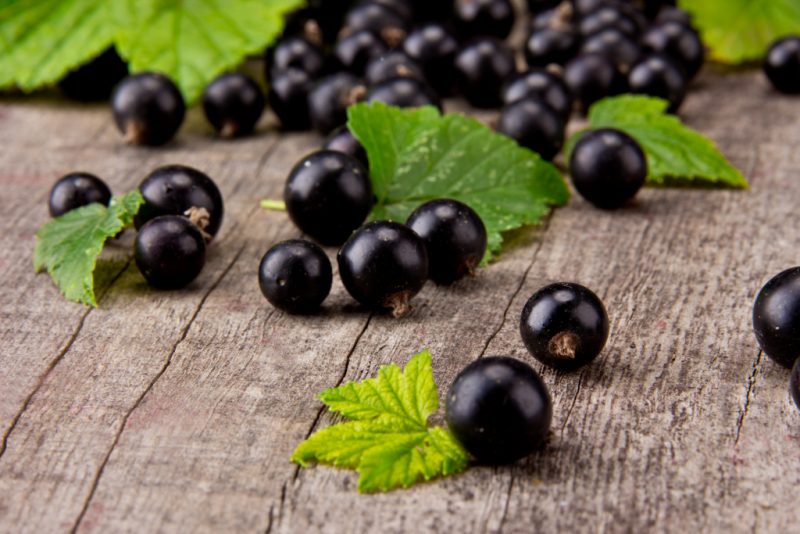
Their collection is carried out as they ripen, and the berries ripen unevenly, so it is possible to produce 2–4 harvests per season. For drying, dryers are used with preliminary drying of berries at a temperature of about 40 ° C, then they are dried at 50-60 ° C, or they are naturally dried in well-ventilated places.
Fruits can also be frozen whole or grated (with or without sugar). You can also make jam. However, with this method of harvesting, useful vitamins and minerals are destroyed by high temperature.
For the preparation of the leaf, the time after the collection of berries is suitable. The most valuable leaves are from the middle of young branches. Drying is done in attics or in rooms with good ventilation. Store fruits and foliage in linen or paper bags in dry rooms.
Recipes in traditional medicine
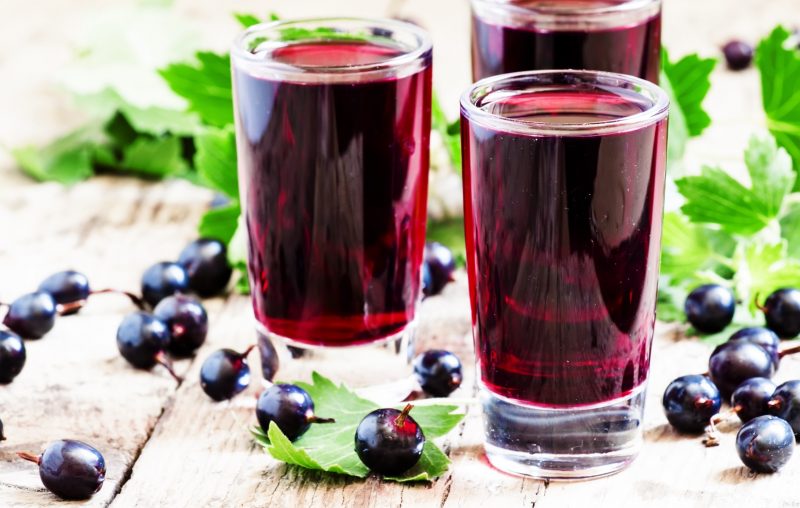
- Infusion of leaves for colds. A dry leaf of currant is crushed, 2 tablespoons of the raw material are poured with a glass of boiling water and allowed to infuse for half an hour. The filtered broth is used to rinse the throat 3-5 times a day or taken orally in 0.5 cups with the addition of a teaspoon of honey.
- Jam in five minutes from blackcurrant with blueberries. Required: 500 grams of currants and blueberries, 1 kg of granulated sugar and 350 milliliters of water. Syrup is made from sugar and water. In it, boiling, pour pre-washed and sorted berries, boil with constant stirring for 5 minutes. Hot jam is poured into sterile jars and rolled up with a lid. It turns out a wonderful restorative and useful medicine for maintaining visual acuity.
- Currant tincture on white wine for gastritis with low acidity. A couple of handfuls of fresh currant leaves are washed, chopped with a knife and creased in hands until juice is secreted. Then they are placed in a glass jar and poured with 500 milliliters of dry white wine. Two weeks, periodically shaking the jar, the tincture is kept in a dark place at a temperature close to room temperature. It is then filtered and taken as needed in a tablespoon before meals. Tincture also relieves fatigue and helps with increased fatigue.
Contraindications and possible harm

The use of black currant is undesirable for:
- diabetes mellitus;
- increased acidity of the stomach;
- thrombophlebitis (due to the content of vitamin K).
Extremely carefully, currants should be given to children under 3 years old and consumed by women during breastfeeding.







